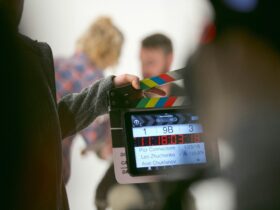How Hollywood Movies Have Evolved

The technology used to make movies has changed tremendously, and the film industry has taken advantage of this. King Kong in 1933 and 2005 are wholly different. The Kong is a lifelike beast in the new movie, with realistic, deep growls and snorts. In fact, movies have become faster and darker over time, showing no signs of stopping. We’re hoping God steps in to shine some light in the world of Hollywood. Otherwise, the evolution of cinema is something that has fascinated many, but what have been some of the greatest changes?
Shots Are Shorter
In 1930, the average shot was 12 seconds in length. Today, it is 2.5 seconds on average. Because shots are shorter, there are also more of them. One 150 movie sample showed that, between 1935 and 2010, the average number of shots in movies was 1,132. The 2005 King Kong movie had 3,099! Some people have suggested that this is the result of the MTV generation, not in the least because actors and actresses often first gain fame through singing. Others disagree, as shots started to become shorter long before 1982, the birth year of MTV. It is more likely because fewer characters feature in each shot of newer movies.
Shot Patterns Have Changed
On a psychological level, human beings find it tough to concentrate on one thing for more than a few seconds at a time. Cinematographers are aware of this, which is why they change shots so often, forcing people to re-orient and regain their attention. Not everybody agrees on this, however. While it is certainly true that The Empire Strikes Back grasped people’s attention, and this is a perfect example of rapidly changing shots, many individuals are equally gripped by film noir, in which shots almost don’t change at all. Perhaps personal preference is at play here.
There Is More Motion
Movies today, unsurprisingly, have a lot more action than they did in the past, and this also ensures people continue to pay attention. Biologically, a rapid sequence of shots, increase heart rate and galvanic skin response, which means viewers become physiologically aroused. Motion engages, but it can also push people away. Lengthy, frenetic movement is simply too much. Rather, movie-makers must find the “triangle of tolerability”, which is the Goldilocks zone of action. Movies recognized by the Academy of Motion Picture Arts and Sciences consistently rank within that sweet spot.
The Light Has Changed
Last but not least, movies today tend to be darker. Importantly, there has been no change in the color and brightness of things that are already bright, but everything dark around it is much darker. This shift has also been very rapid, with the difference between the first Harry Potter movie and the last one being noticeable to the naked eye.
If you are interested in doing your own research on the changes in movie techniques, you can view a full list here: https://netflixupdate.com/netflix-movies/ of movies made over the past generations. Perhaps you can spot something that scientists have missed so far!
What baffles scientists and cinematographers alike, however, is what is next. Where movies will go from here is anybody’s guess. What is known, however, is that some will get it completely right and become trendsetters for future films.











Leave a Reply